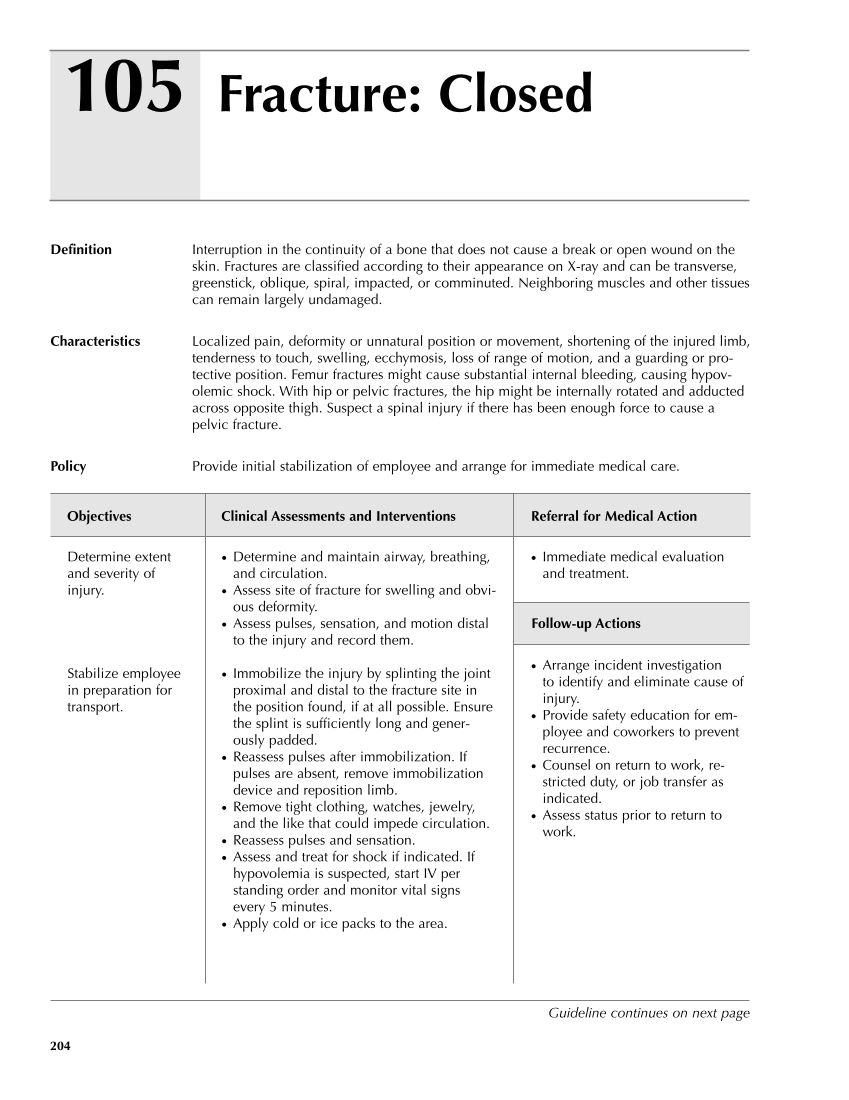105 204 Definition Interruption in the continuity of a bone that does not cause a break or open wound on the skin. Fractures are classified according to their appearance on X-ray and can be transverse, greenstick, oblique, spiral, impacted, or comminuted. Neighboring muscles and other tissues can remain largely undamaged. Characteristics Localized pain, deformity or unnatural position or movement, shortening of the injured limb, tenderness to touch, swelling, ecchymosis, loss of range of motion, and a guarding or pro- tective position. Femur fractures might cause substantial internal bleeding, causing hypov- olemic shock. With hip or pelvic fractures, the hip might be internally rotated and adducted across opposite thigh. Suspect a spinal injury if there has been enough force to cause a pelvic fracture. Policy Provide initial stabilization of employee and arrange for immediate medical care. Objectives Clinical Assessments and Interventions Referral for Medical Action Fracture: Closed ● Immediate medical evaluation and treatment. Follow-up Actions ● Arrange incident investigation to identify and eliminate cause of injury. ● Provide safety education for em- ployee and coworkers to prevent recurrence. ● Counsel on return to work, re- stricted duty, or job transfer as indicated. ● Assess status prior to return to work. Determine extent and severity of injury. Stabilize employee in preparation for transport. ● Determine and maintain airway, breathing, and circulation. ● Assess site of fracture for swelling and obvi- ous deformity. ● Assess pulses, sensation, and motion distal to the injury and record them. ● Immobilize the injury by splinting the joint proximal and distal to the fracture site in the position found, if at all possible. Ensure the splint is sufficiently long and gener- ously padded. ● Reassess pulses after immobilization. If pulses are absent, remove immobilization device and reposition limb. ● Remove tight clothing, watches, jewelry, and the like that could impede circulation. ● Reassess pulses and sensation. ● Assess and treat for shock if indicated. If hypovolemia is suspected, start IV per standing order and monitor vital signs every 5 minutes. ● Apply cold or ice packs to the area. Guideline continues on next page
Purchased from OEM Press by (ge corporate access). (C) 2013 OEM Health Information, Inc. All rights reserved.












































































































































































































































































































































































































































